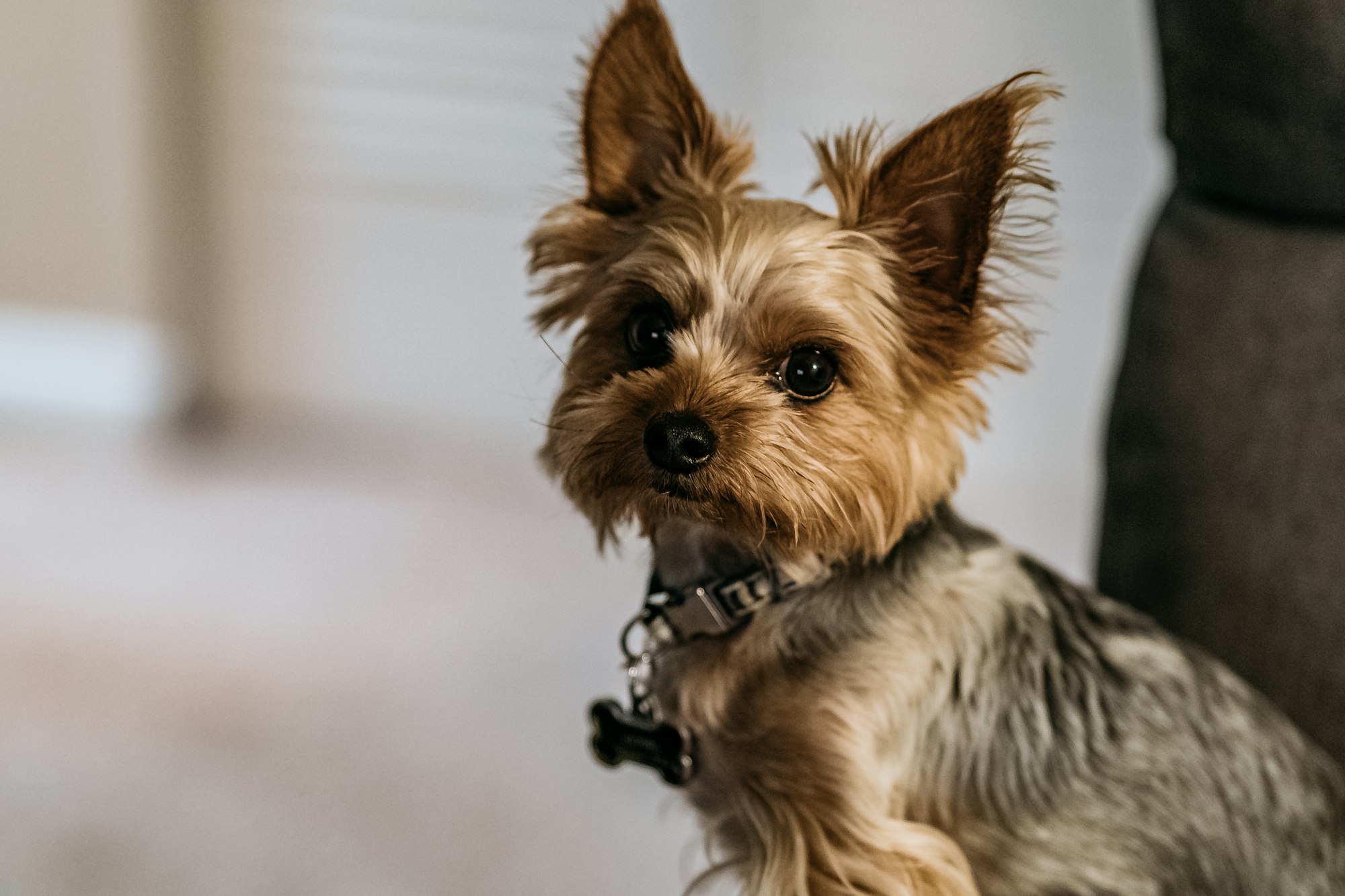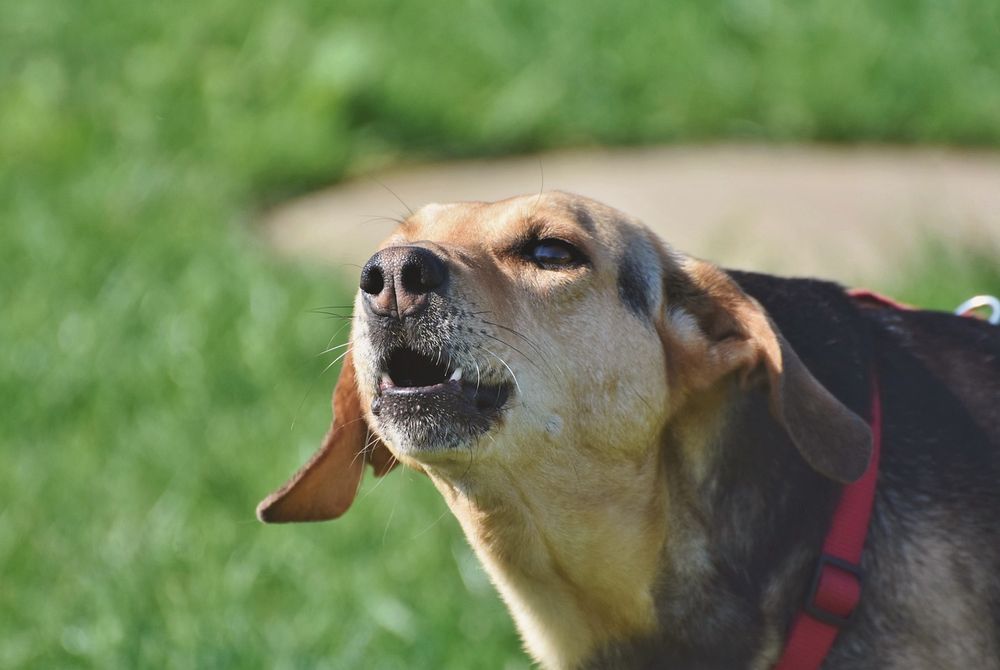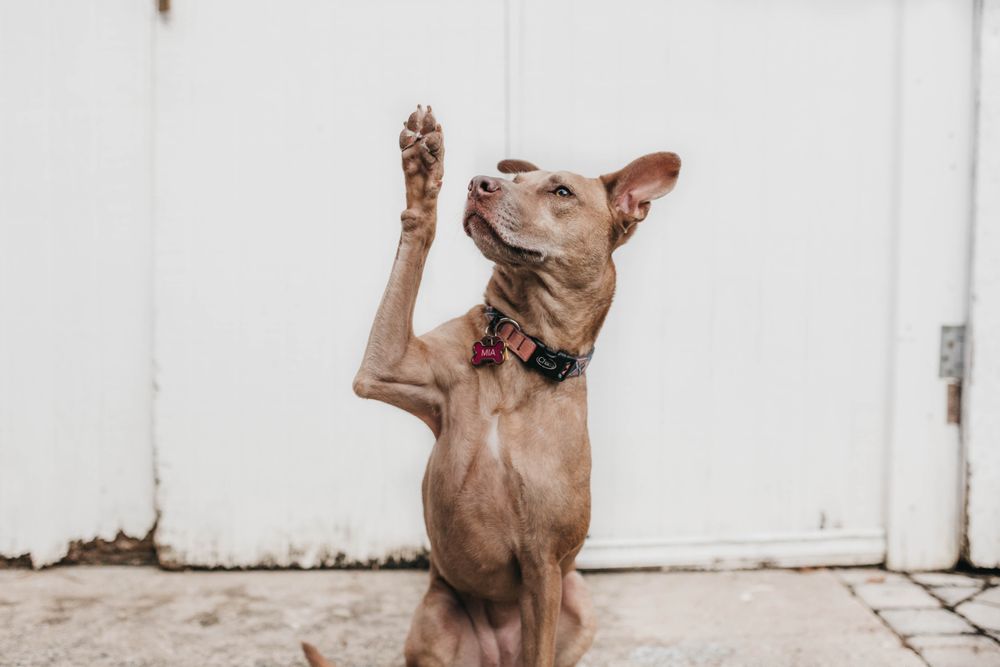Aggression is a natural canine behavior, and almost every dog will show signs of aggression at some point in their lifetime. When a dog reacts to something using aggressive or reactive behavior (growling, barking, lip curling, etc), they are trying to tell you they want to add distance from whatever is triggering their emotion (a person, dog, garbage truck, etc). To help you manage your dog’s aggressive behavior, this article explains:
- What can cause dogs to be aggressive towards people
- How to manage aggression
- What other pet parents are asking about aggression
What can cause dogs to be aggressive towards people?
There are a few reasons your dog might be showing signs of aggression:
- Their social distance has been violated. Every dog has a “social distance zone” when it comes to other dogs and humans. Some dogs are comfortable with dogs and humans very close to them and others are not. Problems with reactivity and aggression usually arise when the “social distance zone” is violated by humans or other dogs, and the dog feels they have to be on the offense to keep others out.
- They’ve experienced too many back-to-back stressful events. Stress can push dogs to be aggressive. For instance, if your dog experiences multiple instances of people violating their “social distance zone” on a particular day, or they visit the vet, hear too many loud noises, are home during a storm, or experience any other situation they find stressful, they may be more likely to growl, snap or bite. This is because your dog is close, or at, their aggression threshold and has had enough.
- They are feeling territorial. Territorial aggression arises when a dog feels like they must protect a person, place or thing.
How can you reduce or eliminate aggressive behavior towards other people?
To reduce your dog’s aggressive behavior toward people, learn to read your dog’s body language and recognize when they’re in a triggering situation. To do this, familiarize yourself with the “Aggression Ladder”. This will help you understand how your dog is feeling in any given situation.
Depending on the trigger and situation, your dog may start at the bottom of the ladder with yawning, or immediately start in the middle with growling. When you see your dog exhibiting any of these behaviors, remove them from the situation and separately start to work on counter conditioning techniques (e.g. provide your dog with a treat or reward every time they see the thing that triggers their aggression). Over time, counter conditioning can help your dog develop a neutral or even positive association with the thing causing their aggression.
If you are worried about your dog’s aggressive behavior, we recommend consulting a veterinary behaviorist. To find a behaviorist near you, click here.

How can I keep people safe around my dog?
If your dog has exhibited signs of aggression towards people, you should muzzle your dog whenever they are in the presence of other people. A great option is the Baskerville muzzle. We love this muzzle because it allows your dog to breathe and drink water normally, while simultaneously keeping everyone safe.
Lastly, if you are concerned about anyone being in danger around your dog, consider a crate or keep your dog on leash so that no one comes into contact with your dog.
Frequently asked questions about dogs that are aggressive towards other people
Why is my dog aggressive towards visitors?
Aggression can arise if your dog feels as though their social distance zone has been violated, they’ve experienced too many back-to-back stressful events throughout the day, or they feel territorial about their space.
How can I stop my dog from being aggressive towards strangers?
To reduce your dog’s aggressive behavior toward people, learn to read your dog’s body language and recognize when they’re in a triggering situation. Furthermore, ask strangers to give your dog ample space and respect their “social distance zone.”
Can an aggressive dog be “cured”?
Aggression isn’t something that can be “cured”, but it is something you can manage by recognizing the signs and using counter-conditioning techniques, to change their feelings about the underlying stressor.
Counter conditioning is the act of re-teaching a dog to have a neutral or positive association with something that was once disliked or feared. To do this, pair the thing your dog dislikes with something they like. For instance, if your dog doesn't like men, feed them treats or give them a toy (something they love) every time they see a man. Over many repetitions, your dog will learn that whenever men are around, good things happen. Eventually, this process will produce a neutral or positive emotional reaction to men.




